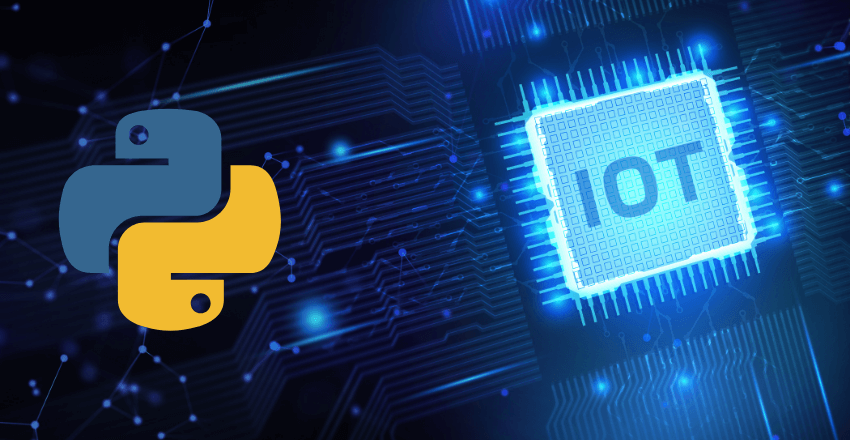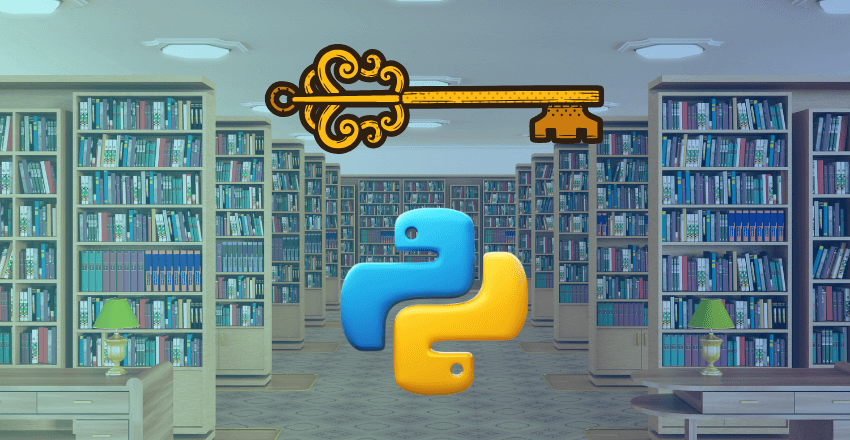 Python is quickly becoming the go-to language for building IoT solutions. Its versatility and extensive libraries make it an ideal choice for simplifying complex tasks in IoT development. With Python, expert solutions for IoT can be leveraged, enabling developers to deliver intelligent and innovative projects.
Python is quickly becoming the go-to language for building IoT solutions. Its versatility and extensive libraries make it an ideal choice for simplifying complex tasks in IoT development. With Python, expert solutions for IoT can be leveraged, enabling developers to deliver intelligent and innovative projects.
Understanding the Power of Python in IoT
Python has emerged as a preferred language for IoT projects due to its versatility, simplicity, and extensive libraries. Its popularity can be attributed to the ease with which it can be used to simplify complex tasks in IoT projects. Python’s syntax is easy to learn and read, making it an ideal choice for both beginners and experts in programming.
Python’s flexibility makes it suitable for a wide variety of IoT applications, including sensor data analysis, device control, automation, and data visualization. Its extensive libraries enable developers to quickly build frameworks and solutions for IoT projects. For example, the “Adafruit IO” library allows for easy integration of IoT devices with cloud services, while the “MQTT” library provides a lightweight messaging protocol for IoT communication.
Python also offers cross-platform compatibility, allowing IoT solutions to be developed on any operating system, including Windows, Linux, and macOS.
Let’s take a look at a simple Python program that demonstrates how easy it is to read and write data from an IoT device:
<pre>
import serial
ser = serial.Serial('COM3', 9600)
while True:
data = ser.readline()
print(data)
</pre>This code reads data from a sensor connected to the computer’s serial port and prints it to the console. The code is easy to understand and can be modified to perform more complex tasks in an IoT project.
Python’s simplicity and versatility make it an ideal language for developing IoT solutions, and its extensive libraries allow for easy integration with other technologies. As we explore the power of Python in IoT, we will discover how it compares to other languages and frameworks, and examine its role in data analytics and security in IoT projects.
Key Python Libraries/Frameworks for IoT Development

Python‘s popularity in IoT projects can be attributed in part to its extensive libraries and frameworks that simplify IoT tasks. Here are some key Python libraries and frameworks that are commonly used in IoT development:
| Library/Framework | Description |
|---|---|
| Adafruit IO | Allows developers to build custom IoT projects with secure and reliable data exchange between devices and web services. |
| MQTT | Lightweight messaging protocol that enables communication between IoT devices and servers with minimal network bandwidth, making it well-suited for IoT applications. |
| Twisted | Event-driven networking engine that simplifies asynchronous programming for IoT applications. |
| PySerial | Enables communication between Python and serial port devices, such as microcontrollers and sensors. |
| NumPy | Library for numerical computing in Python, useful for handling data from IoT devices. |
Adafruit IO is a popular Python library for building IoT projects that require secure and reliable data exchange between devices and web services. It provides a cloud-based platform for receiving, storing, and transmitting data between IoT devices and web services.
Here is an example of using Adafruit IO with Python:
# Import Adafruit IO Client library
from Adafruit_IO import Client
# Create client instance
aio = Client('YOUR_AIO_USERNAME', 'YOUR_AIO_KEY')
# Send data from IoT device to Adafruit IO
aio.send('TEMPERATURE_FEED', 23.5)MQTT is another popular Python library for IoT applications. It is a lightweight messaging protocol that enables communication between IoT devices and servers with minimal network bandwidth, making it well-suited for IoT applications.
Here is an example of using MQTT with Python:
# Import Paho MQTT client
import paho.mqtt.client as mqtt
# Create client instance
client = mqtt.Client()
# Connect to MQTT broker
client.connect('mqtt.eclipse.org', 1883)
# Subscribe to topic
client.subscribe('myTopic')
# Publish message to topic
client.publish('myTopic', 'Hello, MQTT!')These libraries and frameworks are just a few examples of how Python can simplify IoT tasks. They provide developers with the tools they need to build intelligent IoT solutions with ease and efficiency.
Python vs. Other Languages for IoT Projects
When it comes to IoT development, Python has emerged as a popular choice among developers. However, many still wonder how it compares to other programming languages commonly used in IoT projects, such as C++ or Java.
One of the biggest advantages of Python is its ease of use and quick development time. Python code is easy to read and write, which makes it an ideal choice for prototyping and rapid development. In comparison, C++ and Java can be more complex and time-consuming.
Python’s extensive community support is another significant advantage. The vast number of libraries and frameworks available for Python makes it easier to build IoT solutions, especially for complex tasks such as machine learning and data analytics. In contrast, C++ and Java may require developers to write custom code or rely on third-party libraries with limited support.
However, Python does have some limitations in IoT projects. Memory management can be a concern, as Python’s automatic garbage collection can impact real-time performance. Additionally, Python may not be the best choice for resource-constrained devices or applications that require low-level system access.
When comparing languages, it’s important to consider the specific needs of the project and choose the language that is best suited for those needs. For some projects, Python may be the clear choice, while others may benefit from using a different language. Regardless of the language chosen, developers should aim to write clean, efficient code that meets project requirements.
Code Comparison: Python vs. C++
| Python | C++ |
|---|---|
| print(“Hello, World!”) | cout |
| x = 5 | int x = 5; |
| list = [1, 2, 3] | int arr[] = {1, 2, 3}; |
In the above code examples, we can see some of the syntax differences between Python and C++. Python’s dynamic typing allows for more flexibility in code, whereas C++’s static typing enforces more strict type checking.
Code Comparison: Python vs. Java
| Python | Java |
|---|---|
| print(“Hello, World!”) | System.out.println(“Hello, World!”); |
| x = 5 | int x = 5; |
| list = [1, 2, 3] | int[] arr = {1, 2, 3}; |
Java and Python share some syntax similarities due to their common origin in the C language family. However, Java’s syntax can be more verbose, which can slow down development. Java also requires a more complex development environment, whereas Python can be run from the command line.
While there are advantages and disadvantages to each programming language for IoT projects, Python’s simplicity and extensive community support make it a compelling choice for developers.
When used in combination with the right frameworks and libraries, Python can help deliver intelligent and efficient IoT solutions.
Python’s Role in Data Analytics for IoT
Python’s data processing and visualization libraries make it an ideal language for handling data analytics in IoT projects. The combination of Pandas and Matplotlib, for instance, allows developers to extract valuable insights from IoT data in a simple and efficient manner.
With Pandas, developers can manipulate and analyze large sets of data with ease. This library provides data structures and functions for data manipulation, cleaning, and analysis, making it the go-to tool for data wrangling. In addition, it can handle a variety of data types and formats, ranging from time-series data to structured and unstructured data.
Matplotlib, on the other hand, enables developers to create various data visualizations, such as line graphs, scatter plots, and histograms. It provides a wide range of customization options for charts and graphs, making it easy to present data in a clear and meaningful way.
For instance, in an IoT project that involves monitoring temperature and humidity levels, you could use Pandas to clean and process the data, then use Matplotlib to create a line graph to visualize the trends over time.
Python’s data analytics capabilities have also been utilized in industries such as agriculture and healthcare. In precision agriculture, IoT sensors can collect data on soil moisture, temperature, and other variables, which can then be analyzed using Python to optimize crop yields. In healthcare, IoT devices can collect patient data, which can be analyzed for early detection of diseases.
As IoT devices continue to generate vast amounts of data, Python’s data processing and visualization tools will become increasingly important in helping developers make sense of the information and deliver meaningful insights.
Security Considerations with Python in IoT
When it comes to IoT development, security is a critical consideration that developers must prioritize. Python can help address security concerns in several ways, including through the use of cryptography libraries like “cryptography” and “pyOpenSSL”. These libraries provide secure methods for encryption, decryption, and digital signature generation.
Best practices for securing IoT devices and data include implementing strong passwords, using two-factor authentication, and encrypting data both at rest and in transit. Python can help with these practices by providing easy-to-use libraries for implementing encryption and secure communication protocols such as SSL and TLS.
However, it’s essential to keep in mind that Python’s dynamic nature can make it susceptible to vulnerabilities, and developers must take steps to reduce the risk of attacks.
For example, developers should sanitize user input and avoid using third-party packages with unknown security histories. They should also conduct regular security audits and implement security measures to protect against vulnerabilities.
As the IoT industry continues to grow, security will remain a significant concern. Python can play a critical role in securing IoT devices and data, but developers must remain vigilant and take proactive steps to minimize security risks.
Challenges and Limitations of Python in IoT

While Python is a powerful language for developing IoT solutions, it does have some challenges and limitations that developers must be aware of.
Memory Management
One of Python’s limitations in the context of IoT is its memory management. Python uses automated memory management, which can result in memory fragmentation and inefficient memory usage. This can be particularly problematic in resource-constrained IoT devices with limited memory. Developers must be careful to optimize their code and avoid memory leaks to ensure efficient memory usage.
Performance Considerations
Python’s interpreted nature can also impact its performance in IoT applications. The interpretation process can result in slower execution times compared to compiled languages such as C++. However, with effective optimization techniques and the use of specialized libraries, Python’s performance can be improved significantly.
Real-Time Responsiveness
Python’s garbage collection and interpreted nature can make it difficult to achieve real-time responsiveness in IoT applications that require fast and predictable responses. This can be a significant challenge for applications such as industrial automation or autonomous vehicles, where even small delays can result in serious consequences. Developers must use techniques such as pre-allocation and real-time operating systems to minimize delays and ensure real-time responsiveness.
Despite these challenges, Python remains a popular choice for IoT development due to its ease of use, extensive libraries, and supportive community. By optimizing code and leveraging specialized libraries, developers can overcome the limitations of Python and create powerful IoT solutions.
Best Practices for Python in IoT Development
When building IoT solutions with Python, there are several best practices that developers should follow to ensure code quality and maximize performance. Here are some key tips:
- Optimize code: As IoT devices often have limited resources, it’s important to optimize code wherever possible. This can include reducing memory usage, minimizing computation, and avoiding unnecessary loops.
- Modularize: Breaking code into smaller, reusable modules can simplify development and maintenance. It can also allow for easier testing and debugging.
- Error handling: Proper error handling is crucial in IoT development to prevent system failures and security breaches. Developers should consider potential error scenarios and plan for appropriate responses.
- Testing: Comprehensive testing is important to ensure that IoT solutions are functioning as expected. It’s recommended to use automated testing frameworks to simplify the process and catch errors early.
- Document code: Clear and concise documentation can help other developers understand the code and make future updates or modifications. This is particularly important in collaborative development environments.
By following these best practices, developers can ensure that their Python-based IoT solutions are optimized for performance, maintainable, and secure.
Python for Smart IoT Solutions
Python has emerged as a popular choice for IoT projects, providing expert solutions for developers. With its versatility and extensive libraries, Python simplifies complex tasks in IoT projects and delivers smart solutions.
Python’s simplicity and ease of use make it an ideal language for developing IoT solutions. It is a powerful tool for processing and analyzing data, and its data processing and visualization libraries, such as Pandas and Matplotlib, can be utilized to extract valuable insights from IoT data.
Python also offers a range of libraries and frameworks that simplify IoT tasks. For instance, Adafruit IO and MQTT are examples of key Python libraries and frameworks that are commonly used in IoT development.
Comparing Python with other programming languages used in IoT projects like C++ or Java highlights the advantages of Python in terms of quicker development time, ease of use, and extensive community support. Code examples in both Python and other languages demonstrate these differences in syntax and implementation.
Real-world examples of successful IoT projects that leveraged Python show how Python can solve specific challenges and deliver innovative solutions. Industries such as home automation, agriculture, and healthcare have all benefited from Python’s use in IoT projects.
Security is a significant concern for IoT projects, and Python can help address security issues by using cryptography libraries and best practices for securing IoT devices and data.
Python also has limitations and challenges in IoT projects, such as memory management and real-time responsiveness. Best practices for using Python in IoT development can help developers maximize the potential of Python for their IoT solutions.
The future of Python in IoT projects looks promising, with emerging technologies like machine learning and edge computing. Research and industry examples support the discussion of the potential of Python in developing intelligent IoT projects.
External Resources
Python.org: https://www.python.org/
Pycom: https://pycom.io/
FAQ

Q: What is Python for IoT?
A: Python for IoT refers to the use of the Python programming language in developing smart solutions for Internet of Things (IoT) projects. It allows developers to leverage the versatility and extensive libraries of Python to simplify and streamline complex tasks in IoT development.
Q: Why is Python popular for IoT projects?
A: Python has become popular for IoT projects due to its versatility, simplicity, and extensive libraries. It offers a wide range of tools and frameworks that make it easier to develop and deploy IoT solutions. Additionally, Python’s large community and active support make it a reliable choice for IoT development.
Q: What are some key Python libraries and frameworks for IoT development?
A: Some key Python libraries and frameworks commonly used in IoT development include Adafruit IO, MQTT, and PySerial. These libraries and frameworks provide functionalities for data communication, device control, and data storage, making it easier to build IoT applications using Python.
Q: How does Python compare to other programming languages for IoT projects?
A: Python has several advantages over other programming languages commonly used in IoT projects. It offers quicker development time, ease of use, and extensive community support. Python’s syntax and implementation also differ from languages like C++ or Java, making it more accessible for developers new to IoT.
Q: How does Python contribute to data analytics in IoT?
A: Python plays a vital role in handling data analytics for IoT projects. It offers powerful libraries like Pandas and Matplotlib, which allow developers to process and visualize IoT data effectively. These libraries provide valuable tools for extracting insights and patterns from large volumes of IoT data.
Q: How can Python help address security concerns in IoT projects?
A: Python provides cryptography libraries that enable developers to implement encryption and secure communication protocols in IoT projects. By following best practices and leveraging these libraries, developers can enhance the security of IoT devices and protect sensitive data from unauthorized access.
Q: What are the challenges and limitations of using Python in IoT projects?
A: While Python offers many benefits for IoT development, there are some challenges and limitations to consider. Memory management, performance considerations, and real-time responsiveness are areas where Python may face limitations. However, developers can overcome these challenges by optimizing their code and exploring alternative approaches.
Q: Can you provide best practices for Python in IoT development?
A: Absolutely! When using Python in IoT development, it is essential to focus on code optimization, modularization, and robust error handling. By writing efficient and modular code and implementing error handling strategies, developers can ensure scalability, maintainability, and reliability in their IoT solutions.
Q: How does Python enable smart IoT solutions?
A: Python enables smart IoT solutions by providing a versatile and powerful programming language. Its extensive libraries and frameworks simplify complex tasks, while its simplicity and community support make it accessible to developers. Python’s role in data analytics and security also contributes to the intelligence and effectiveness of IoT projects.
Lydia is a seasoned technical author, well-versed in the intricacies of software development and a dedicated practitioner of Python. With a career spanning 16 years, Lydia has made significant contributions as a programmer and scrum master at renowned companies such as Thompsons, Deloit, and The GAP, where they have been instrumental in delivering successful projects.
A proud alumnus of Duke University, Lydia pursued a degree in Computer Science, solidifying their academic foundation. At Duke, they gained a comprehensive understanding of computer systems, algorithms, and programming languages, which paved the way for their career in the ever-evolving field of software development.
As a technical author, Lydia remains committed to fostering knowledge sharing and promoting the growth of the computer science community. Their dedication to Python development, coupled with their expertise as a programmer and scrum master, positions them as a trusted source of guidance and insight. Through their publications and engagements, Lydia continues to inspire and empower fellow technologists, leaving an indelible mark on the world of scientific computer science.


![15 Most Contributed Python Projects on GitHub [Stats]](https://hirepythondeveloper.com/wp-content/uploads/2024/03/15-Most-Contributed-Python-Projects-on-GitHub-Stats-1-150x150.png)




